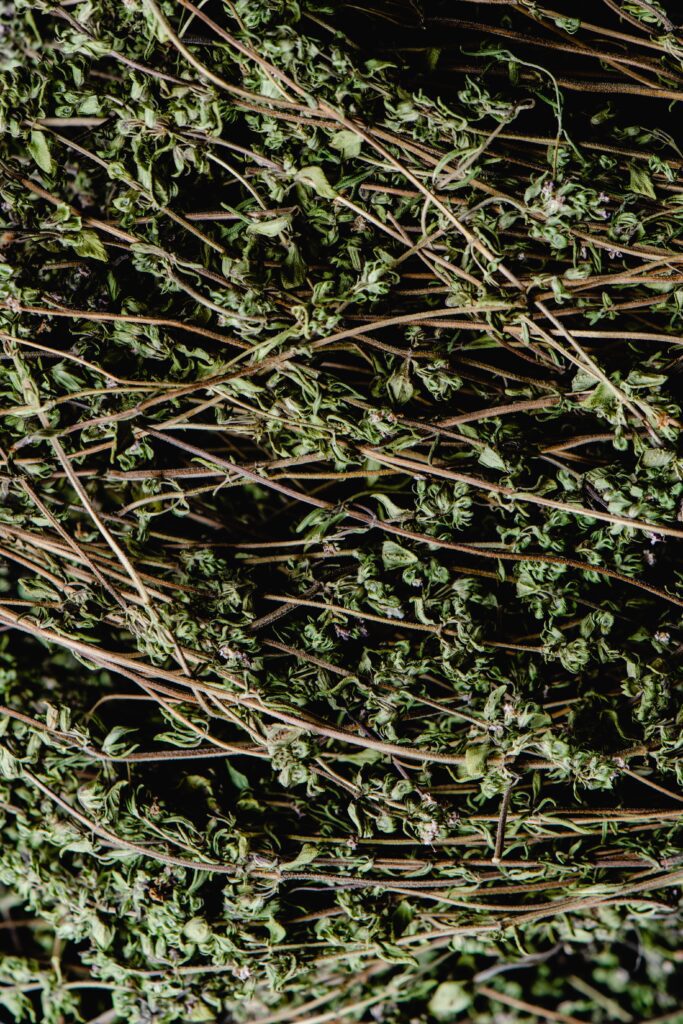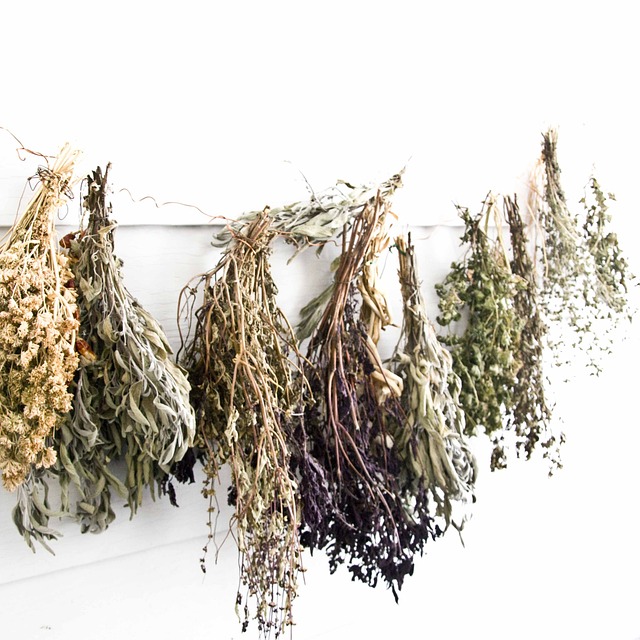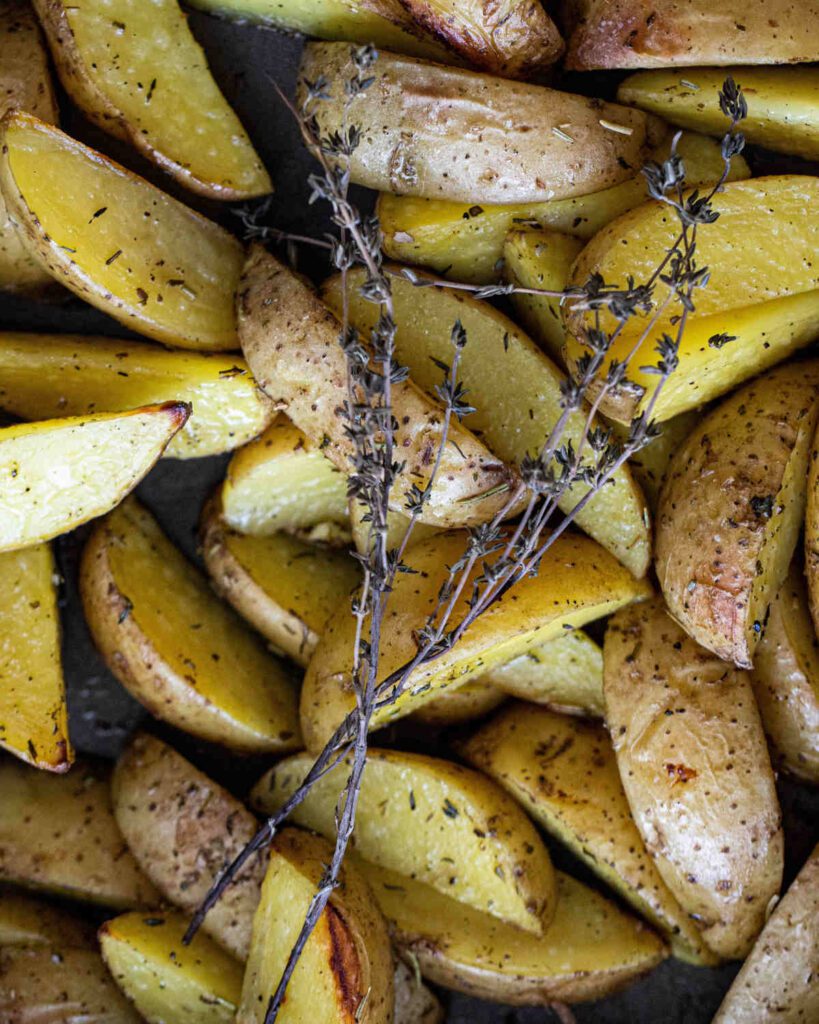When most people think of preserving food, they think of canning. However, there are many other methods, such as drying, that are just as safe and effective. Drying thyme is a great way to preserve this fragrant herb for use all year long. It’s easy to do and doesn’t require any special equipment. With a little bit of know-how, you can dry thyme successfully and enjoy its flavour for months to come. So whether you’re a beginner or an intermediate when it comes to drying herbs, read on to learn about drying thyme.

What is thyme?
Thyme is a herb that belongs to the mint family. It’s closely related to oregano and has a somewhat similar flavour and aromatic profile.
Its flavour can be described as sharp, earthy, and minty with hints of floral, sweet, and peppery tastes. This baseline taste is added to by the specific flavours of different varieties of thyme, especially those with citrus notes.
This herb has small leaves that grow in clusters on thin, fibrous stems. Its mild flavour makes it a versatile ingredient that can be used to season all sorts of dishes on its own or in combination with other herbs.
How to cut fresh thyme leaves
The best time to pick thyme leaves for drying is in the morning after the dew has evaporated. The leaves should be cut from the top of the plant a few inches from the stem. These leave will be the freshest and most flavourful.
All the varieties of thyme can be dried, such as lemon thyme, French thyme, English thyme and lime thyme amongst others.
How to dry thyme
Drying thyme is a great way to preserve the herb so that you can enjoy its flavour and aroma all year round. Several different methods can be used to dry thyme.
Air-drying
- The most common method is air-drying by simply tying the thyme sprigs together and hanging them upside down in a cool, dark place until the leaves are brittle.

Another way of air-drying is to lay the thyme sprigs out on a clean surface in a single layer and allow them to air dry for several days; maybe turning occasionally.
For both of the above methods, it is helpful to check on the thyme daily, and when the leaves are crisp and crumbly, they’re ready to be stored.
Oven-drying
1. Preheat the oven to 50 degrees Celcius (120 degrees F) or lower if possible.
2. Strip leaves from thyme stems and discard the stems. (Or tie the stems together to use, as you would fresh thyme, for seasoning a stew or soup, like a bouquet garni on its own or with other herbs tied in too.) Spread leaves out on a baking sheet in a single layer, so that air can circulate around the thyme leaves. Move the leaves around on the tray every 20-30 min.
3. Drying may take 2-4 hours depending on the temperature used until leaves are dry and brittle.
Dehydrating
Using a dehydrator to dry thyme is a quicker method. This device is versatile and can be used to dry other produce too. Simply spread the herb out on the dehydrator tray and set it to the lowest setting. The thyme will be dried within a few hours.
Whichever method you choose, make sure to store the dried thyme in an airtight container in a cool, dark place.
How to store dried thyme
If you’re like most people, you probably have a bottle of dried thyme in your spice cabinet. Here are four tips on how to dry and store thyme:
1. Make sure the thyme is completely dried before storing it. If there’s any moisture left in the herb, it will develop mildew and spoil quickly.
2. Store the dried thyme in an airtight container. Glass jars with tight-fitting lids work well, or you can use zip-top bags.
3. Store dried herbs in a cool, dark place. Avoid storing it near heat sources or in direct sunlight, as this will cause the herb to lose its flavour and aroma more quickly.
4. Be sure to label the container with the date so you can remember how long it’s been stored.
5. When stored properly, dried thyme will stay fresh for six to eight months. However, if you notice that the herb has lost its flavour or aroma, it’s best to discard it and start with fresh thyme.
Be aware of any signs of spoilage while in storage, namely, the presence of mould, slimy residue or musty odour. If any of these are present or even just suspected, discard the thyme and try again.
Ways of using dried thyme
When using dried thyme, remember that it is more potent than fresh thyme, so you may need to use less.
1. In a marinade: Add dried thyme to your favourite marinade recipe for extra flavour.
2. In a rub: Combine dried thyme with other spices like salt, pepper, and garlic powder to create a delicious rub for chicken, beef, or pork.
3. In soup: Thyme is a great addition to soups and stews for extra flavour.

4. As a seasoning: Sprinkle dried thyme over vegetables or rice for an added flavour boost.
5. In baked goods: Add a pinch of dried thyme to muffins, bread, or cookies for a subtle taste
6. Making a delicious cup of thyme and honey tea.
Drying your own thyme is easy and economical, and you can be sure of its quality. You will also have it available all year round, which is not the case with store-bought herbs.
Dried thyme also makes a great gift for any cooking enthusiast in your life. So why not give it a try? You may find that you enjoy having dried herbs on hand as much as I do.